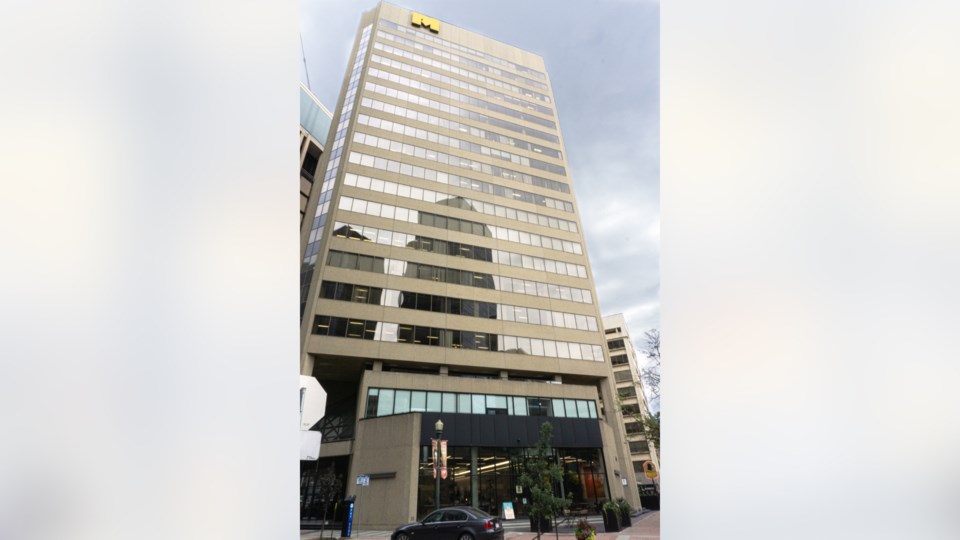While the conversion of underutilized office space has been touted by many as the key to addressing space shortages in other sectors, most often residential and hospitality, the numbers have to work.
Office towers typically have a different layout than buildings intended for residents due to the different nature of the servicing required to accommodate occupants.
But when the opportunity to acquire the Phipps McKinnon building in downtown Edmonton came up, local investor Josan Properties Ltd. crunched the numbers and declared it a winner.
“When we started looking at this building as an investment opportunity, there were rumours that the City of Edmonton would come to the table with an incentive,” said Josan president and CEO Raka (Rocky) Josan.
But that didn’t happen, and a detailed analysis of the building convinced Josan that the project would work regardless of incentives.
“With or without an incentive, this project really works,” he said, noting that the company has looked at other properties where the math simply didn’t pencil out.
“We have looked at a couple of other buildings but they just don’t work out as well as this one does without an incentive,” Josan said. “We’d have a real good pipeline of conversion candidates if there was some assistance from the city.”
Josan’s plans for the 19-storey property, which traded in March for $11.25 million as part of a deal that included two adjacent restaurant properties, include creating an amenity centre of the third floor and developing 91 residential units on seven floors. Office uses will be consolidated on floors 11-19.
The 200,000-square-foot tower was 60 per cent vacant at the time of the sale, and existing tenants are in the process of relocating to the upper floors.
The third-floor amenity centre will be open to all tenants, both residential and commercial, and feature a tenant lounge and business centre, a dog walk and hot tubs overlooking the new Rice Howard Way entertainment district.
“We really believe in the concept and the theory of converting older, maybe underutilized office space,” Josan said. “It helps the city with property taxes to bring that base back up.”
Since older space that lacks amenities is likely to be the last to lease as office markets recover, Josan felt that the 47-year-old Phipps McKinnon property was a good candidate for conversion.
Josan didn’t look at opportunities in Calgary, where a city-backed incentive program was paused last fall due to strong demand, with 13 projects awarded funding at the time applications were paused and four more in review.
But recent reports of Strategic Group’s pause on its conversion of the Barron Building, citing cost considerations, points to the challenges developers face and the importance of municipal support.
“Some increase in costs has just cautiously slowed some of the developers’ timelines, but not abandoning their intent to deliver,” said Cory Wosnack, managing director, Avison Young in Edmonton, who applauds Josan’ ambitions with Phipps McKinnon.
“This is a really important investment,” he said. “We don’t have other conversions underway at the present time that are taking a current office building and converting it to residential in the downtown core.”
Avison Young brokered the deal that saw Canadian Western Bank agree to relocate next year to Manulife Place, which is undergoing renovations in anticipation of the bank’s occupancy of 200,000 square feet.
Manulife Place is right across from the Phipps McKinnon building, making it what Wosnack calls “an excellent supportive detail.”
“With the partial conversion of Phipps McKinnon and 200,000 square feet becoming occupied by Canadian Western Bank across the street at Manulife Place, that one block area now becomes a very exciting part of our financial core,” he said. “The real estate community in Edmonton is very appreciative of Rocky stepping forward to acquire this property and deliver something that is unique in this marketplace.”
While office markets in Alberta are seeing above-average improvements relative to other cities, the shifts come at a time when few major new mandates for space are being seen.
“We don’t have growth, and 40 per cent of our office market downtown is government and Crown corps,” Wosnack said. “You’re relying on a smaller segment of the market to grow, and that’s the private sector, and there’s not enough expansion of private sector space needs because they can use their space more efficiently as well, by embracing a more flexible work structure.”
While companies may be growing, Wosnack noted, “that doesn’t always translate into growing their space needs.”
The completion of Epcor tower in 2011, Kelly Ramsay tower in 2016 and the Edmonton Tower and Stantec office structures in 2018 have given the city enough new office space for the time being.
“We won’t see another new office building for quite some time because we have so much available inventory we can retrofit,” Wsonack said, noting that vacancies are running at about 18 per cent, on par with the late 1990s, when 30 office properties were converted to residential and educational uses.
“[There was] incredible value creation to the office market,” he said. “But also the removal of chronically vacant buildings.”
This created a new downtown experience that drew in youth, created a more dynamic social milieu and at the same time a more vibrant office market. With the recent designation of Rice Howard Way as an entertainment district and the creation of new residential and work space adjacent to it, Wosnack believes the stage is set for a similar shift.
“[Phipps McKinnon] will be completely retrofitted, completely amenitized, and it would be fantastic to see other investors follow suit,” he said.
Josan is optimistic, both for the future of its investment as well as the city stepping up to support similar investments elsewhere in the core given the long-term payoffs.
“There will be an uptick on value, definitely, when we have the building converted and stabilized,” he said.



